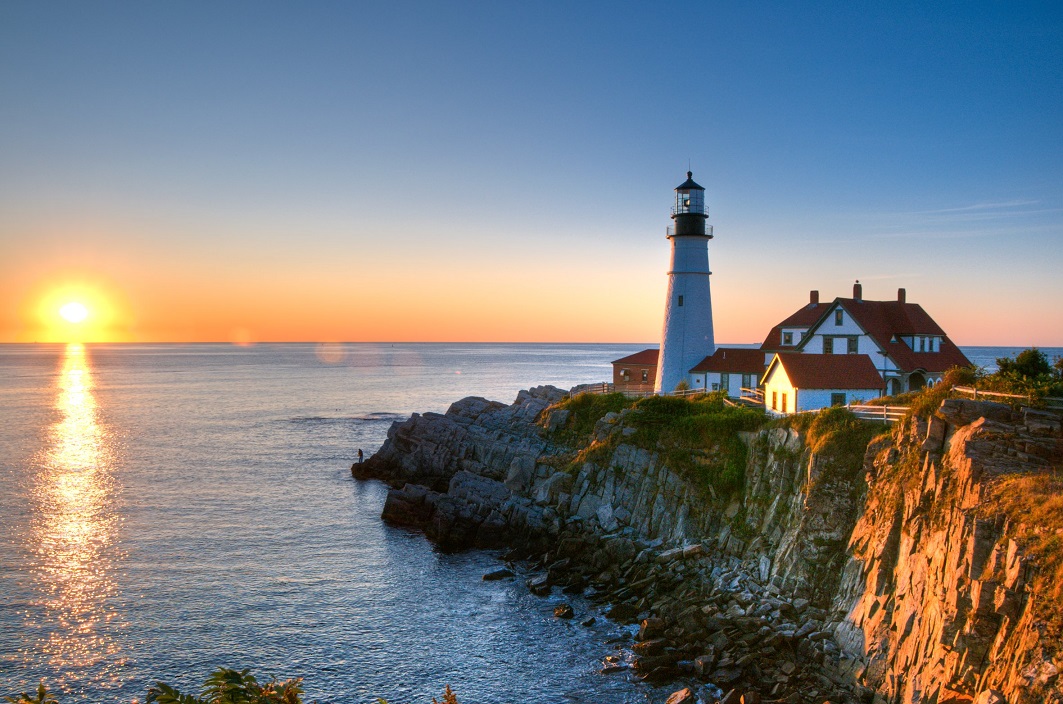Shopping on vacation


By Eileen Ogintz
Tribune Content Agency
The next time you get caught in the rain on vacation, remind the kids how vacation missteps can actually be life-changing — in a good way.
Consider Leon Leonwood Bean. He came home from a Maine hunting trip in 1911 with cold, wet feet — and an idea on how to keep his feet dry next time. He got a local shoemaker to stitch leather uppers on rubber boots, launching one of America’s most successful family-owned companies and one of Maine’s top attractions — the gargantuan L.L. Bean campus in Freeport, Maine. The campus gets more than 3 million visitors a year in a town of less than 10,000 — more than double the population of Maine.
Remind the kids that things don’t always go smoothly, even with a great idea. The first hundred pairs of the iconic Maine Hunting Shoes — still sold today — were returned because the tops and bottoms split. Bean issued refunds, thus ushering in the company’s lifetime product replacement policy, which has only recently been amended. (You now have a year to return something with a receipt.)
The 200,000-square-foot flagship store, complete with trout pond and freshwater aquarium built to look like a stream bed, is on the site where Bean first opened his shop in 1917. Fans of his boots started to stop by for advice and gear, and Bean allowed late-night visitors, which is why, today, L.L. Bean is open 24/7. There are also outdoor discovery schools with dozens of activities and locations and stores across the country, and as far away as Japan.
L.L. Bean has become so synonymous with Maine that when I asked Maine kids interviewed for my just-released “Kid’s Guide to Maine,” they suggested L.L. Bean as the perfect place to souvenir shop, whether kids want a sticker for their water bottle (or a new bottle with an L.L. Bean logo) a new backpack, rain jacket, bathing suit, dog collar or those Maine Hunting Boots. Today, you can also buy anything from monogrammed duffels and towels to kayaks, canoes, fishing rods and snowshoes.
And an entire shopping town with nearly 70 stores, many of them outlets and including an L.L. Bean Outlet, has grown up around the main store. (Kittery, Maine, incidentally has even more outlets — 90 at last count.)
In Maine, or wherever families go on vacation, shopping plays an ever-increasingly important role — just look at the emergence of the themed Disney Springs at Walt Disney World, which offers the largest Disney store in the world, as well as dozens of other shops, restaurants and street entertainment.
According to research presented at the TMS Family Travel Conference I co-chair, 28 percent of families heading on a getaway weekend say they want to go shopping — more than plan to go to the beach, a theme park or visit a national park or historic site.
And more than half of those polled for the Portrait of American Travelers, count shopping as a desirable vacation attribute — more so than watersports, nightlife or attending sporting events.
Even if your family members aren’t typically big shoppers, bringing home the right souvenir is as much a vacation ritual as that perfect selfie or family photo for next year’s holiday card.

But how many times have you brought home an (expensive) pile of junk? Once in France, my daughter Mel, then about 7, insisted on getting an umbrella hat — literally a hat with a little umbrella on top — that she decided would be ideal on rainy days. Of course, it broke before we even got home.
It’s wise to have a conversation with the kids in advance of the trip. How much can they each spend on souvenirs? Would they prefer one “big” souvenir or several smaller things? How can they save for souvenirs? Some families put loose change in a big jar for months, and then divide up the amount. (Kids can do extra chores to earn souvenir money or ask grandparents for money for their birthday to go into their souvenir fund.)
Discuss as a family how much time you want to spend shopping. Perhaps the family can split up (as mine does) allowing the dedicated shoppers to browse as long as they like while the others opt for another activity, so that no one is whining or waiting impatiently.
Even kids suggest it’s smart to be strategic in making souvenir choices, those I’ve interviewed for my Kid’s Guide books have said:
— Choose something you can only get where you are visiting, or something that will remind you of your experience — a T-shirt from a Broadway play, a Cubs hat from the baseball game you saw in Chicago or a miniature cable car in San Francisco.
— Choose something you will use every day, like a key chain with a lobster on it from Maine, or one with a surfboard from Southern California.
— Browse craft markets where you can meet local artisans.
— Start a collection — national park patches, pins from different cities or theme park attractions; magnets.
— Buy a picture frame emblematic of where you are and print out one of your favorite selfies when you get home.
— Ask your parents or grandparents to allow you to choose a souvenir Christmas tree ornament — the funnier the better. We have bears on skis from Colorado, pirates and glittery fish from the Caribbean, miniature canoes from Minnesota and Eiffel Towers from France, among others.
— If you aren’t flying, bring home something you’ve enjoyed eating on vacation — blueberry jam from Maine, salsa from the Southwest or pralines from New Orleans. Bring enough to share with your friends!
Don’t forget a present for your pet. Happy shopping!
© 2018 EILEEN OGINTZ
DISTRIBUTED BY TRIBUNE CONTENT AGENCY, LLC.
